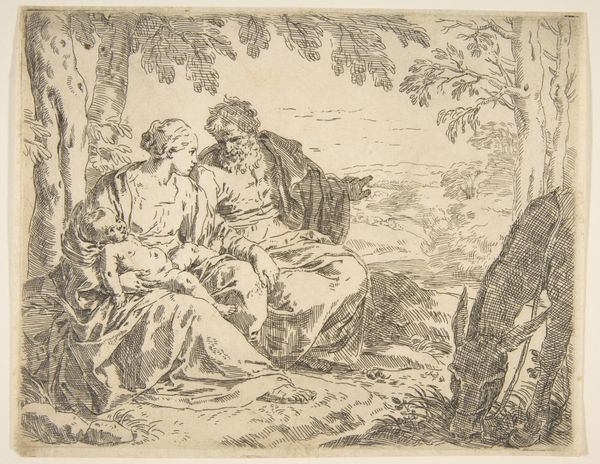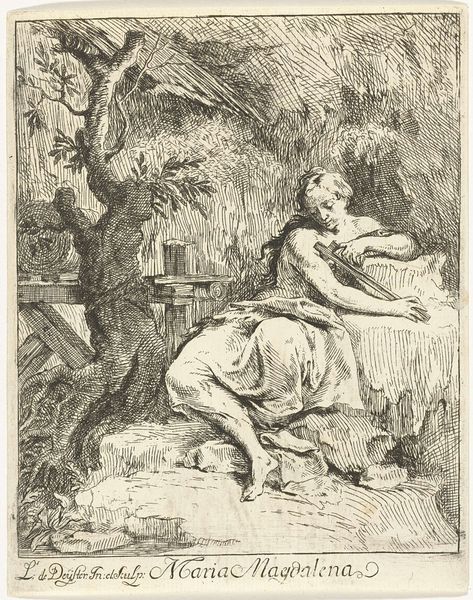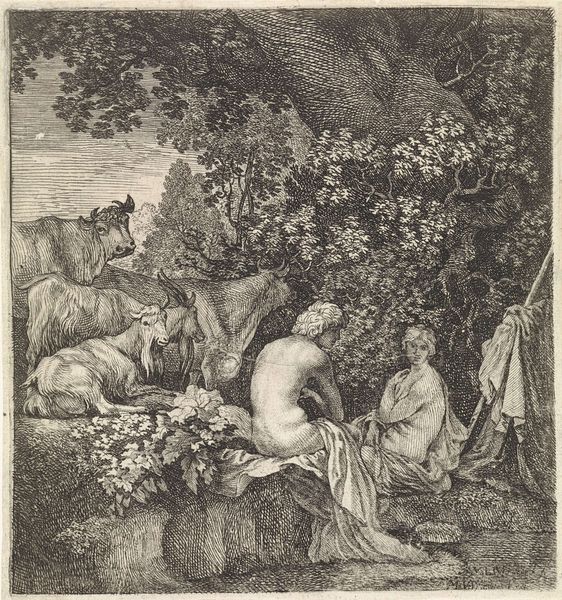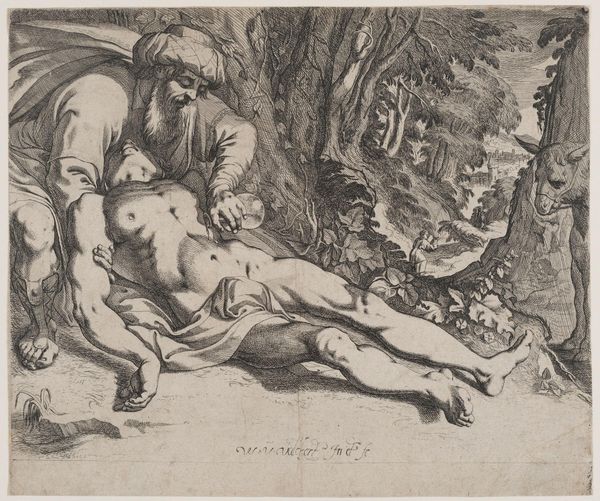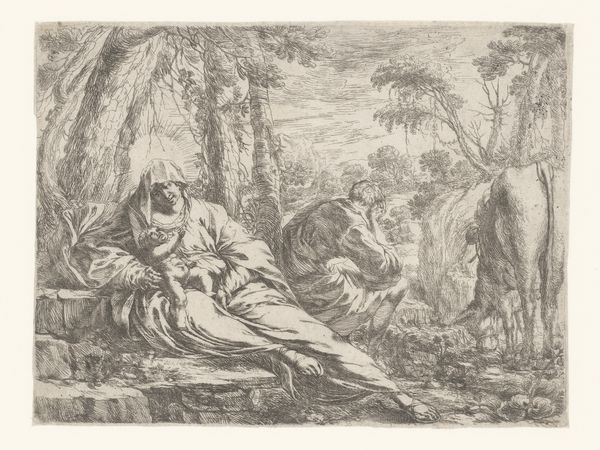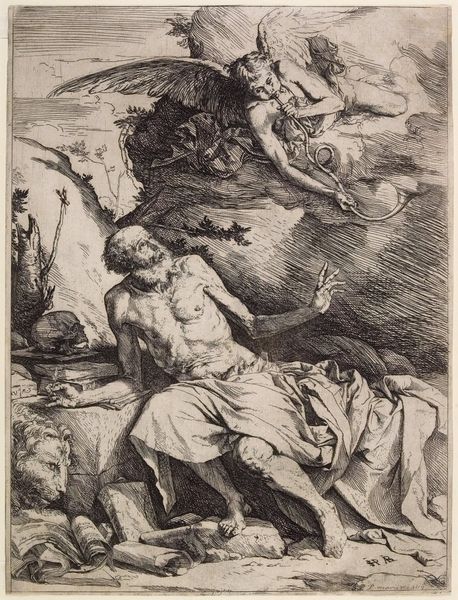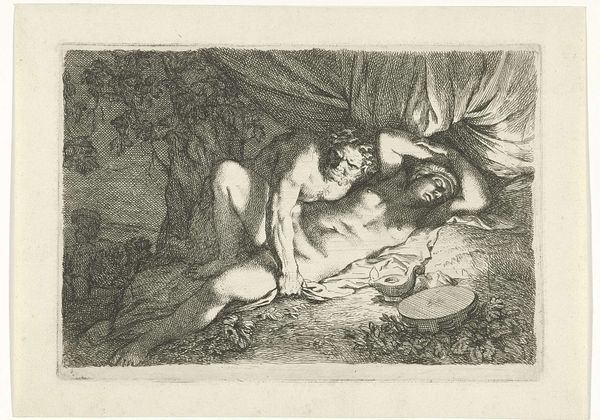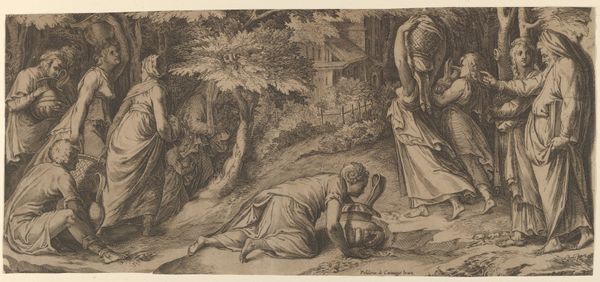
etching
#
baroque
#
etching
#
landscape
#
figuration
#
history-painting
#
nude
Dimensions: height 120 mm, width 154 mm
Copyright: Rijks Museum: Open Domain
Arnold Houbraken etched this rendering of *Narcissus* sometime before 1719, and the pool's surface is more than a mere reflection. It is a symbol, steeped in layers of meaning. The pool, historically, is a mirror, reflecting not just an image but the depths of the soul. Narcissus, caught in his self-adoration, embodies a perilous trap—one where self-obsession eclipses the outside world. Echoes of this theme resonate through time, from Caravaggio’s shadowed canvas to the poetic verses of Ovid. Consider the gesture of Narcissus reaching for his reflection. It’s a grasping for something unattainable, a pursuit of illusion over reality. This motif resurfaces in medieval allegories of vanity, and in modern psychoanalysis of the ego. The emotional weight lies in the unfulfilled desire, the tragic allure of the unattainable self. The symbol is an ever-evolving narrative. What was once a cautionary tale in ancient Greece becomes a mirror reflecting the complexities of identity and desire. The image invites us to confront our own reflections, urging a deeper understanding of the self beyond the surface.
Comments
No comments
Be the first to comment and join the conversation on the ultimate creative platform.
